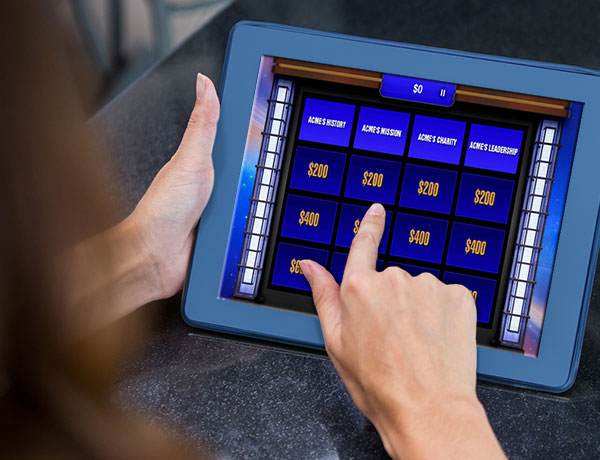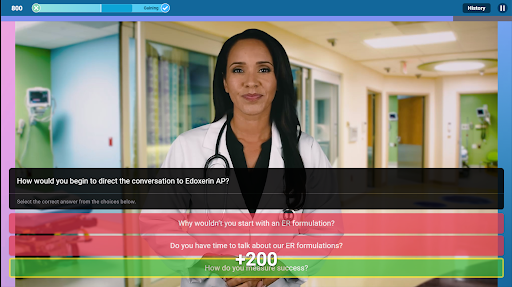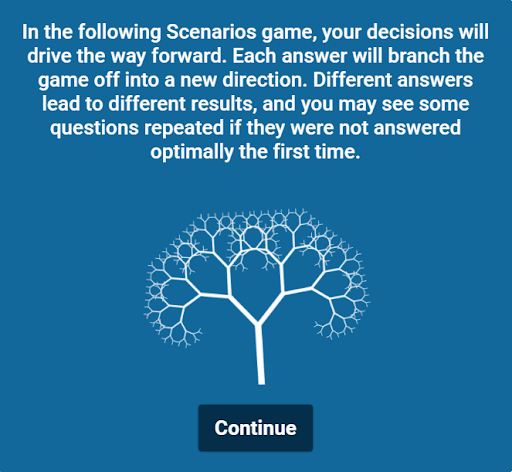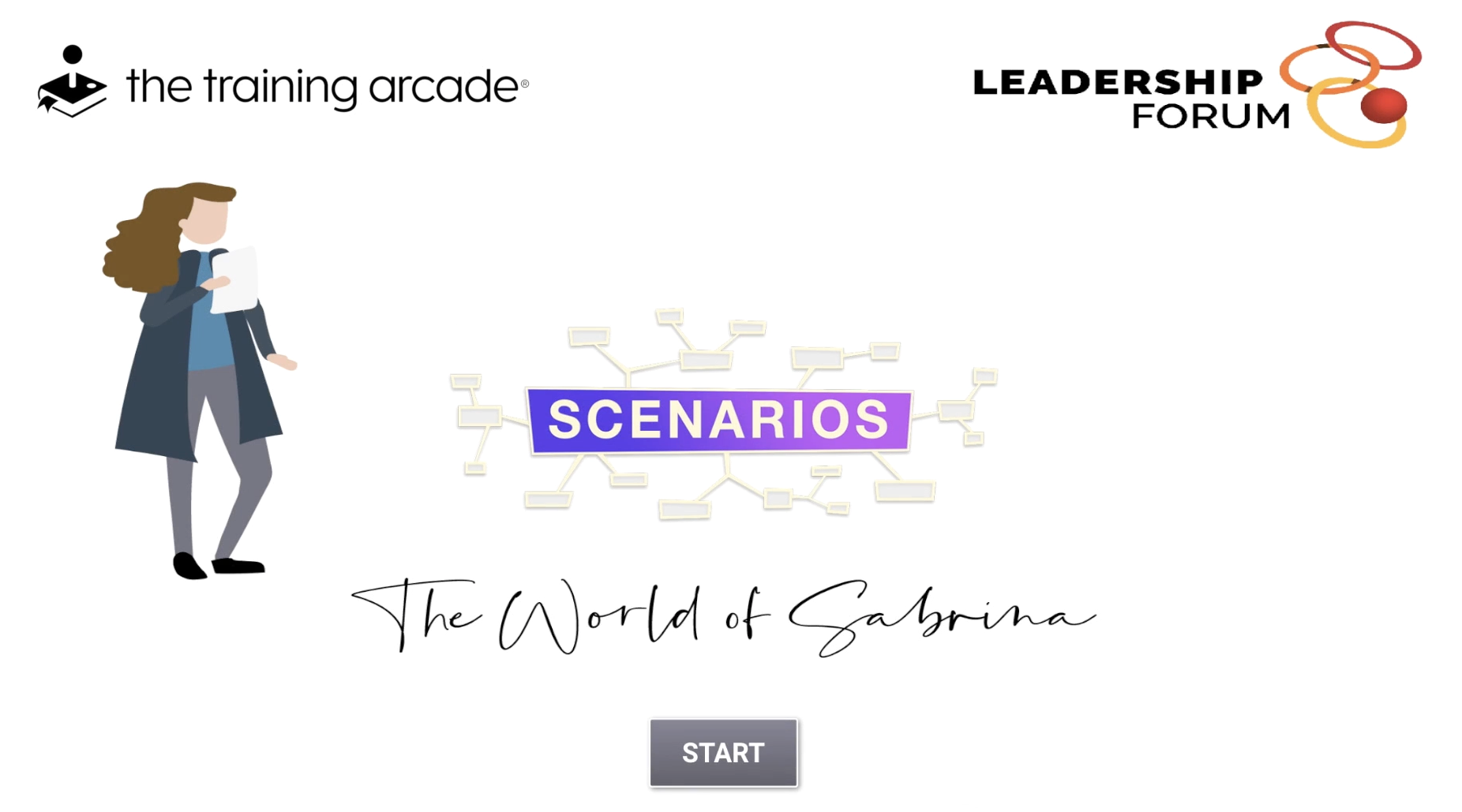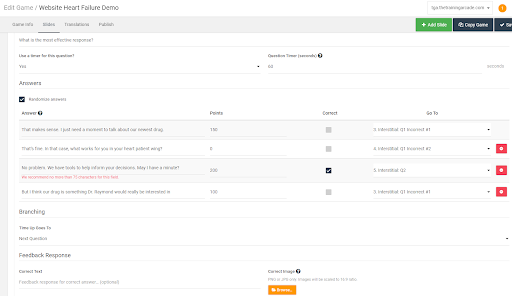Just like soft-serve ice cream, soft skill training is always in demand. Both employers and employees are striving to improve emotional intelligence, communication, and problem-solving skills to create healthier work environments and more effective teams. In other words, everyone wants toppings on their sundae.
How do you train for real-world scenarios involving the human element short of throwing learners into the deep end or by actual role-playing? While both of those options can work, there is a better and more effective solution that allows you to reach and engage your learners – branching path games.
By harnessing the proven effects of gamification and coupling them with your training material, you can easily create real-world scenarios that teach, engage, and help learners retain the information you’re giving them.
The Training Arcade® offers a branching path, also known as a branching dialogue game called Scenarios. Our Scenarios game allows you to take your training content and plug it into an easy-to-use platform, no coding or technical know-how is required.
Play a demo scenario as a pharmaceutical rep pitching new medicines to a busy doctor.
Before we get to building a Scenarios game, let’s look at why these games are so effective. In the demo game above, you’re in the shoes of a pharmaceutical representative trying to get the attention of a busy doctor and learn how to overcome objections.
Benefits of Branching Path Games
If you’re in retail, to be told “customers sometimes get angry and yell at you” is one thing. To play a scenario where that customer is actually yelling at you is another. Being immersed in the situation – as opposed to reading about it- will increase the likelihood of your trainee engaging with and retaining the material.
Branching Path games immerse your trainees into different scenarios they might encounter on the job. They can show the same situation from multiple perspectives and/or demonstrate how the things they learn apply in real life. This immersion is particularly effective when training your employees on those increasingly in-demand soft skills.
Check out this study on why games are effective and how they increase your trainees’ knowledge retention.
In addition, branching scenarios offer trainees an opportunity to practice making decisions and see how different choices play out. Did they say something to upset the customer or client? Send them down a dialogue path to see what happens when they make that mistake. The old adage is true, we learn best from our mistakes, and scenario games allow trainees to make those mistakes in a safe yet realistic environment.
Branching path games also give employees an understanding of how to respond correctly in a difficult situation. Presenting dialogue choices to your trainees and letting them experience each choice or path gives them agency. Agency is what empowers people to learn. That feeling of being in control drives engagement which ultimately drives retention, making the training worthwhile and effective.
Scenarios are also great for breakout sessions in either your in-person or online training. Especially if you’ve built a branching-paths scenario, it can be both fun and educational to send groups off to different rooms and see which paths they take.
Leadership Forum Case Study
We created a leadership training course using our Scenarios game mechanic for The Leadership Forum. Participants work in teams to prioritize investments in their careers by choosing which actions will have the most significant benefit. Should they spend time in relationships and EQ, or is it more important for them to get organized and develop their brands?
Watch this video showing you actual gameplay from the Scenario game that The Leadership Forum created. In it, you can see different branching paths the learners can take and the impact those paths can have on multiple aspects of their careers.
As teams identify their priorities, a set of meters are created and displayed at the top of the screen featuring stakeholder management, promotion readiness, and business impact. By seeing in real-time the impacts of their decisions on career aspects everyone can relate to, this Scenario gives realistic, relevant choices, and the agency to act upon them.
With that agency, learners’ engagement increases and so does their retention of the material. Couple this experience with the proven effects of gamification, and you have a winning combination when it comes to your training.
Where do I get content for my Scenarios Game?
You first need to know what you want to accomplish in your Scenarios game. Knowing your learning objectives is critical to an effective game plan.
Do you want salespeople to learn different techniques for making the sale? Are your training managers in conflict resolution? Or are you trying to get college students to pay attention to, well, anything these days? Establishing your goals will help you understand what content is needed and if your current training materials will do the job.
If you need to source new content, a good place to start is existing training materials or published works in your field. At the very least, it can point you in the right direction and give you a better understanding of how others have approached the same goals or objectives.
But the best source of content is the people who deal with these issues every day. Talk to managers or subject matter experts about realistic issues, common mistakes or misconceptions, and effective solutions.
You’re not looking to win a Pulitzer Prize or an Oscar for your script. Write it like it’s a natural conversation.
Ask for stories and situations from coworkers, managers, or even friends and family and turn those situations into a scenario. Every salesperson has their “worst client ever” story, and every retail person has their “nightmare customer” tale. The material is all around you; ask around, and you can find it.
Check out the first page of the script we wrote for that pharma scenario demo you played earlier: See? It doesn’t look so bad!
If you’d still prefer not to do the work – hey, we get it – we have instructional designers on staff that are here to help. Email us at info@thegameagency.com for more information.
Do I need actors?
Short answer, no, you don’t need actors or even to record video for your scenario. You can easily use still images for the game in The Training Arcade. For access to over 120 million stock images, videos, and “cut-out people”, check out the amazing eLearning Brother’s asset library. However, having live actors, videos, or even a voice recording will help further engage your learners and help immerse them in the scenario.
Maybe building this scenario is just the thing to get your acting career off the ground! There’s no reason you or your employees can’t be the actors in their own scenario. If you don’t have such theatrical aspirations, there are plenty of places you can hire actors to fit your budget.
We found the actor for our pharmaceutical demo on fiverr.com, a freelance site for all kinds of professionals. Other examples of such sites are upwork.com or freelancer.com.
In addition, we highly recommend Powtoon as an affordable, easy-to-use video creation tool. Adding videos created through Powtoon to your scenario can increase learner engagement and knowledge retention and make your training even more effective.
In the end, you can be creative with your scenario! Maybe having members of your company act in your scenario game will bring some comic relief to the training that can further drive engagement. We’ll leave that to you!
How much time does this take?
As much as we’d like to give you a clear-cut answer, there isn’t one. We expect you’ll spend the most significant chunk of your time designing and writing the training content itself. Building your scenario will vary significantly based on what you’re trying to accomplish. Including actors, video, etc., will require more time than using only images.
That said, once you’ve put all your pieces into place, we estimate that constructing the Scenario game in The Training Arcade will take roughly two hours. At that point, you’re simply plugging your information into pre-designed software that’s easy and intuitive to use.
Here’s a sneak peek at what building a scenario in The Training Arcade looks like in the back-end.
Make Your Soft Skill Training More Fun and Effective
Engaging your learners with scenarios puts them in real-life simulations. It allows them to explore different paths to success and failure in a safe environment. With a little planning and thought, you can motivate, engage, and prepare your learners for their work.
Play another scenario where you’re a hotel clerk trying to help a tired traveler check into their room. Sounds easy enough, right?
For more information or to book a walk-through of our Scenarios game-building software, get in touch with one of our rockstar reps and start your journey to becoming a training hero today.

